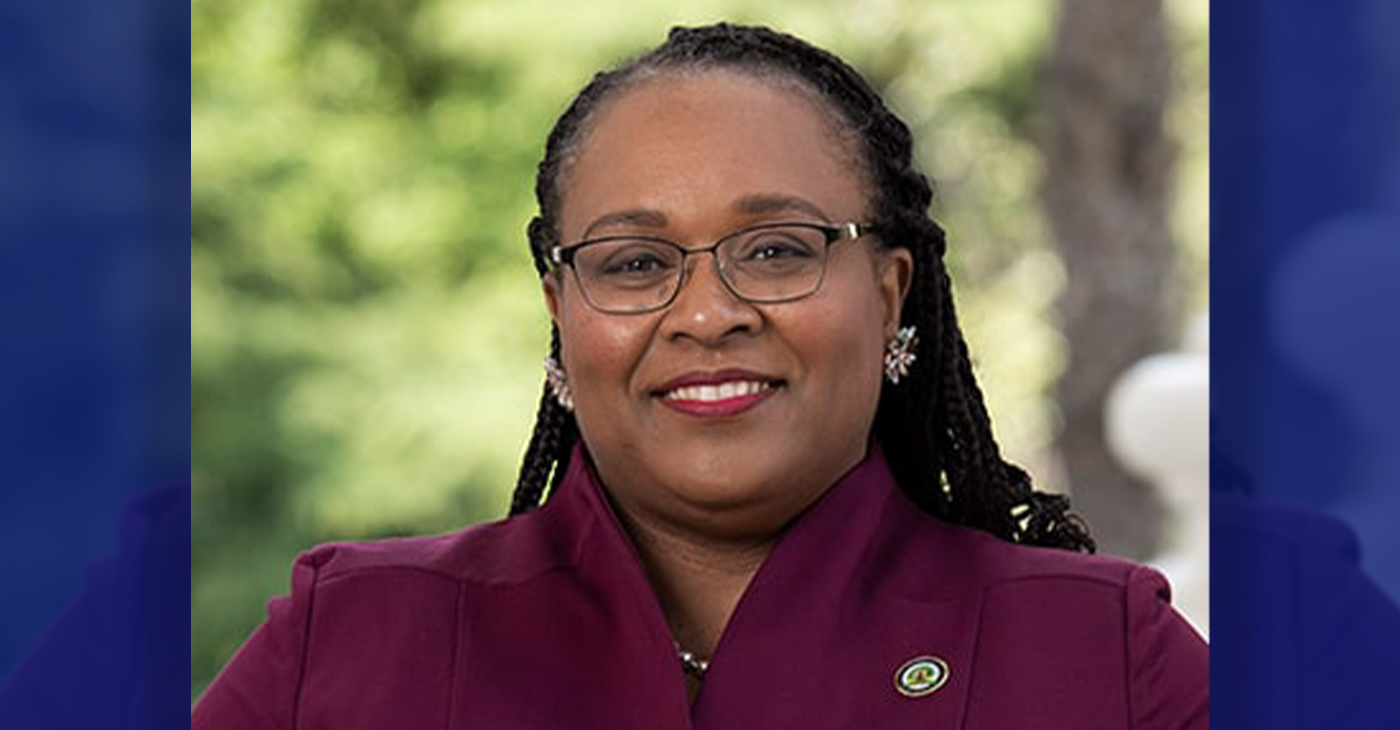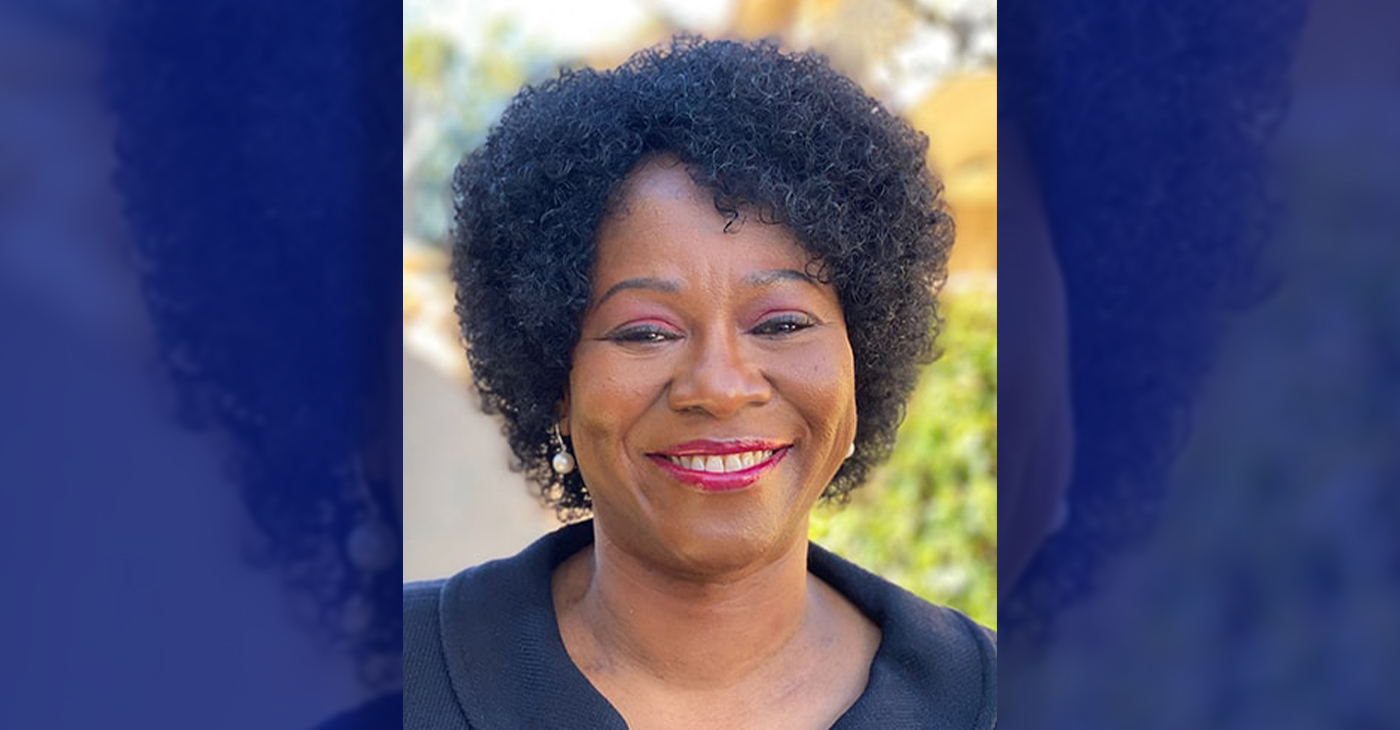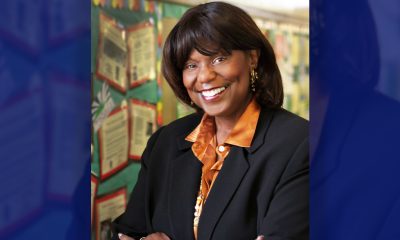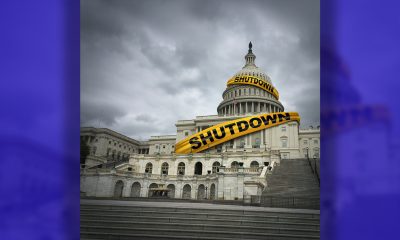National
All Eyes Fixed on Ferguson’s April 7 Election

In this Nov. 25, 2014 file photo, police officers watch protesters as smoke fills the streets in Ferguson, Mo. after a grand jury’s decision in the fatal shooting of Michael Brown. (AP Photo/Charlie Riedel, File)
By Freddie Allen
NNPA Senior Washington Correspondent
WASHINGTON (NNPA) – If the Black residents of Ferguson, Mo., want to radically reform the political climate that encouraged police to disproportionately ticket, fine and arrest them to collect revenue for the city coffers, they’ll have to do more than embrace non-violent acts of civil disobedience and peaceful protests – they will have to vote.
In the north St. Louis suburb that is nearly 70 percent Black, five of six city councilmembers are White and the mayor is a White Republican. The police force is almost 95 percent White.
On April 7, voters in Ferguson will go to the polls in a round of highly-anticipated elections for three out of the six of the city council seats.
“We are in the process now of preparing people to go to polls so that we can turn the tide of the council, where the real power lies in Ferguson,” said Rev. Traci Blackmon, pastor of Christ the King Church of Christ in Florissant, Mo., adding that four residents who have been actively involved in the protests are running for those three open seats.
The city council selects the city manager, who supervises every department in Ferguson. While Mayor James Knowles brings home $350 a month for serving as mayor of the St. Louis suburb. The St. Louis Post-Dispatch reported that Ferguson city manager, John Shaw’s annual salary soared to $120,000 after he was hired in 2007 at $85,000. Shaw resigned shortly after the release of two separate Justice Department reports, one of which painted him as one of the chief architects of a plan that turned the Ferguson police into collection agents for the city.
Getting voters to turn out will be an uphill battle for the activists that have led protests in Ferguson for more than 200 days since Officer Darren Wilson shot and killed Michael Brown, an unarmed Black teenager.
CNN reported that roughly 42 percent of Ferguson voters cast ballots during last November’s midterm elections and that only a few hundred residents had registered to vote between August 11 and October 8.
In 2013, even though Blacks account for nearly 70 percent of the population in Ferguson, Whites made up more than half of the Ferguson electorate, according to voter data analyzed by the Washington Post. Less than 20 percent of eligible voters showed up at the polls when Ferguson Mayor James Knowles was elected in 2011.
Blackmon said that low voter turnout in local elections is not unique to Ferguson. Municipal elections are often held separately from national elections and in some jurisdictions party affiliation is left off of the ballot completely. Blackmon said that economic depravity and educational inequality have caused some to turn away from the political process.
Denise Lieberman, an attorney with the Advancement Project who also co-chairs the Don’t Shoot Coalition, a network of more than 50 diverse local organizations that came together in the wake of the shooting of Michael Brown, said that the epidemics of police violence and voter suppression add to that malaise.
Police investigating the shooting left Brown’s body in the middle of the road for more than four hours, then responded with military-style weapons and gear when residents began to protest. The events were chronicled on social media and transmitted across the world. Attorney General Eric Holder visited Ferguson to underscore the Justice Department’s commitment to investigate the shooting and the police response. Activists from Ferguson met with President Barack Obama at the White House.
Following two separate reports from the Justice Department, a slew of resignations including the city manager and the chief of police and the shootings of two police officers, with local elections rapidly approaching, activists say that protests will continue.
Rev. Traci Blackmon, the pastor of Christ the King Church of Christ in Florissant, Mo., said that the activists were praying for the police and their families just like they continue to pray for the victims of police violence in the region.
“We must not let the rogue actions of a few derail the positive path that the Department of Justice has placed us on,” said Blackmon. “We will continue to pray with our feet until there is no more blood in the streets.”
After an extensive investigation into the August 9 shooting death of Michael Brown, the Justice Department released a report that stated, “Under the law, it was not unreasonable for Wilson to perceive that Brown posed a threat of serious physical harm, either to him or to others. When Brown turned around and moved toward Wilson, the applicable law and evidence do not support finding that Wilson was unreasonable in his fear that Brown would once again attempt to harm him and gain control of his gun.”
The report also stated that, “There are no credible witness accounts that state that Brown was clearly attempting to surrender when Wilson shot him,” and that witnesses who said that the teenager was trying to surrender when he was fatally shot, “could not be relied upon in a prosecution because they are irreconcilable with the physical evidence, inconsistent with the credible accounts of other eyewitnesses, inconsistent with the witness’s own prior statements, or in some instances, because the witnesses have acknowledged that their initial accounts were untrue.”
On the same day, the Justice Department also released a searing report that found Ferguson Police Department not only violated First, Fourth, and Fourteenth Amendments of the United States Constitution, and federal statutory, law officials routinely urged Thomas Jackson, the police chief, to generate more revenue through law enforcement and disproportionately targeted discriminated African American residents for searches and use of excessive force.
Montague Simmons, the executive director of the Organization for Black Struggle, a group founded in 1980 that advocates for a society free of exploitation and oppression, said that the realities exposed in the Justice Department’s report on the Ferguson police department are realities that community members have known for a very long time.
“Even with the findings being revealed, we have yet to really see clear action that there is going to be an effective transformation of the way that policing authorities are allowed to operate in our communities,” said Montague. “We’ve seen some resignations, but no real commitment toward change officially coming from Ferguson or the [surrounding] St. Louis County municipalities who are guilty of the same things.”
Rev. Osagyefo Sekou agreed.
Sekou of the First Baptist Church in Jamaica Plain, Mass., said that the events that occurred in Ferguson follow a familiar pattern of injustice that is happening around the country.
“Throughout the nation Black communities see Ferguson in their own experiences with police,” Sekou. “The resignations and recent shake ups in Ferguson are simply not enough. We need wholesale change.”
Lieberman said that Ferguson groups have had many meetings with members of the Justice Department and other members of the administration about necessary reforms for police departments, local communities and the statehouses.
Lieberman also led a group to Missouri’s statehouse to advocate for legislation that called for greater accountability for police actions and reporting of interactions with residents, greater civilian input and oversight for local police departments.
“This is a movement that is deeply-rooted in principles of nonviolent civil disobedience. And it works,” said Lieberman. “There is no indication that anything would be changing in Ferguson if it weren’t for the people that have taken to the streets for more than 200 days demanding change, forcing government actors to step in.”
###
Activism
2025 in Review: Seven Questions for Assemblymember Lori Wilson — Advocate for Equity, the Environment, and More
Her rise has also included several historic firsts: she is the only Black woman ever appointed to lead the influential Assembly Transportation Committee, and the first freshman legislator elected Chair of the California Legislative Black Caucus. She has also been a vocal advocate for vulnerable communities, becoming the first California legislator to publicly discuss being the parent of a transgender child — an act of visibility that has helped advanced representation at a time when political tensions related to social issues and culture have intensified.

By Edward Henderson, California Black Media
Assemblymember Lori D. Wilson (D-Suisun City) joined the California Legislature in 2022 after making history as Solano County’s first Black female mayor, bringing with her a track record of fiscal discipline, community investment, and inclusive leadership.
She represents the state’s 11th Assembly District, which spans Solano County and portions of Contra Costa and Sacramento Counties.
Her rise has also included several historic firsts: she is the only Black woman ever appointed to lead the influential Assembly Transportation Committee, and the first freshman legislator elected Chair of the California Legislative Black Caucus. She has also been a vocal advocate for vulnerable communities, becoming the first California legislator to publicly discuss being the parent of a transgender child — an act of visibility that has helped advanced representation at a time when political tensions related to social issues and culture have intensified.
California Black Media spoke with Wilson about her successes and disappointments this year and her outlook for 2026.
What stands out as your most important achievement this year?
Getting SB 237 passed in the Assembly. I had the opportunity to co-lead a diverse workgroup of colleagues, spanning a wide range of ideological perspectives on environmental issues.
How did your leadership contribute to improving the lives of Black Californians this year?
The Black Caucus concentrated on the Road to Repair package and prioritized passing a crucial bill that remained incomplete during my time as chair, which establishes a process for identifying descendants of enslaved people for benefit eligibility.
What frustrated you the most this year?
The lack of progress made on getting Prop 4 funds allocated to socially disadvantaged farmers. This delay has real consequences. These farmers have been waiting for essential support that was promised. Watching the process stall, despite the clear need and clear intent of the voters, has been deeply frustrating and reinforces how much work remains to make our systems more responsive and equitable.
What inspired you the most this year?
The resilience of Californians persists despite the unprecedented attacks from the federal government. Watching people stay engaged, hopeful, and determined reminded me why this work matters and why we must continue to protect the rights of every community in our state.
What is one lesson you learned this year that will inform your decision-making next year?
As a legislator, I have the authority to demand answers to my questions — and accept nothing less. That clarity has strengthened my approach to oversight and accountability.
In one word, what is the biggest challenge Black Californians are facing currently?
Affordability and access to quality educational opportunities.
What is the goal you want to achieve most in 2026?
Advance my legislative agenda despite a complex budget environment. The needs across our communities are real, and even in a tight fiscal year, I’m committed to moving forward policies that strengthen safety, expand opportunity, and improve quality of life for the people I represent.
Activism
2025 in Review: Seven Questions for Assemblymember Tina McKinnor, Champion of Reparations, Housing and Workers’ Rights
In 2025, McKinnor pushed forward legislation on renters’ protections, re-entry programs, reparations legislation, and efforts to support Inglewood Unified School District. She spoke with California Black Media about the past year and her work. Here are her responses.

By Joe W. Bowers Jr., California Black Media
Assemblymember Tina McKinnor (D-Inglewood) represents
California’s 61st Assembly District.
As a member of the California Legislative Black Caucus (CLBC),
McKinnor was elected in 2022. She chairs the Los Angeles County Legislative Delegation and leads the Assembly Public Employment and Retirement Committee. McKinnor also served as a civic engagement director, managed political campaigns, and worked as chief of staff for former Assemblymembers Steven Bradford and Autumn Burke.
In 2025, McKinnor pushed forward legislation on renters’ protections, re-entry programs, reparations legislation, and efforts to support Inglewood Unified School District. She spoke with California Black Media about the past year and her work. Here are her responses.
Looking back on 2025, what do you see as your biggest win?
Assembly Bill (AB) 628. If rent is $3,000, people should at least have a stove and a refrigerator. It’s ridiculous that people were renting without basic appliances.
I’m also proud that I was able to secure $8.4 million in the state budget for people coming home from incarceration. That includes the Homecoming Project, the menopause program for incarcerated women, and the Justice Leaders Program.
How did your leadership help make life better for Black Californians this year?
After the Eaton Fire, I pushed to get the same kind of support for affected areas that wealthier regions get after disasters.
I also did a lot of work building political power— establishing the Black Legacy PAC and California for All of Us PAC so we could support Black candidates and educate voters. We also called voters to make sure they understood Prop 50.
People need to understand this: there are only 12 Black legislators in the Capitol. Folks act like we can just walk in and pass reparations, but that’s not how it works.
What frustrated you most this year?
The governor did not have the political will to sign these bills: AB 57 and AB 62. They both passed overwhelmingly in the Assembly and the Senate. We did the work. The only person who didn’t have the political will to sign them was the governor.
The public needs to ask the governor why he didn’t sign the bills. We can’t keep letting people off the hook. He has to answer.
I also introduced AB 51 — the bill to eliminate interest payments on Inglewood Unified School District’s long-standing state loan — held in the Appropriations Committee. That was frustrating,
What inspired you most in 2025?
The civil rights trip to Alabama was life changing. We visited the Legacy Museum and the National Memorial for Peace and Justice. We took members of the Black, Latino, Jewish, and API caucuses with us. It changed all of us.
People aren’t always against us — they just don’t know our history.
What’s one lesson from 2025 that will shape how you approach decisions next year?
The legislative trip to Norway taught me that collaboration matters. Government, labor, and industry sit down together there. They don’t make villains. Everybody doesn’t get everything they want, but they solve problems.
What’s the biggest challenge facing Black Californians in one word?
Inequity. It shows up in housing, wealth, stress – all these things.
What’s the number one goal you want to accomplish in 2026?
Bringing back AB 57 and AB 62, and securing money for the Inglewood Unified loan interest forgiveness.
Black History
Alfred Cralle: Inventor of the Ice Cream Scoop
Cralle learned carpentry, mechanics, and blacksmithing at a young age. These skills would later become essential in his innovative work. As a young man, he moved to Washington, D.C., where he worked as a porter in hotels and at an ice cream shop. It was there that he first noticed a common problem: scooping ice cream was messy and inefficient. Servers struggled because the ice cream stuck to spoons and ladles, and getting the right shape and portion was difficult. Many needed two hands — one to scoop and one to scrape the ice cream off the spoon.

By Tamara Shiloh
Alfred L. Cralle, an African American inventor and entrepreneur, forever changed the way the world enjoys ice cream. Born on Sept. 4, 1866, in Kenbridge, Virginia, Cralle grew up during Reconstruction — a time when opportunities for African Americans were still extremely limited. Despite the challenges of the era, he demonstrated curiosity, creativity, and a natural ability to understand how tools and machinery worked.
Cralle learned carpentry, mechanics, and blacksmithing at a young age. These skills would later become essential in his innovative work. As a young man, he moved to Washington, D.C., where he worked as a porter in hotels and at an ice cream shop. It was there that he first noticed a common problem: scooping ice cream was messy and inefficient. Servers struggled because the ice cream stuck to spoons and ladles, and getting the right shape and portion was difficult. Many needed two hands — one to scoop and one to scrape the ice cream off the spoon.
Cralle believed there had to be a better way.
Using his mechanical training, he began sketching and experimenting with ideas for a tool that could scoop ice cream easily using one hand. After refining his design, he developed what would become a simple yet brilliant invention: the Ice Cream Mold and Disher. On Feb. 2, 1897, Cralle received U.S. Patent No. 576,395 for the device.
His invention — what we now call the ice cream scoop — was groundbreaking. It featured a built-in scraper that automatically released the ice cream with a single squeeze of the handle. Durable, easy to use, and requiring only one hand, the scoop made serving faster and more consistent. His design was so effective that the basic mechanism is still used today in homes, restaurants, and ice cream shops around the world.
Although his invention became widely used, like many African American inventors of his time, he did not receive the compensation or widespread recognition he deserved. Racial barriers prevented him from fully benefiting from his own creation, even as businesses embraced the tool and the popularity of ice cream continued to grow.
After patenting the scoop, Cralle moved to Pittsburgh. There, he worked as a porter for the luxurious Sterling Hotel and later became a successful businessman. He remained active in his community and continued to create opportunities for himself despite the limitations faced by African Americans at the turn of the 20th century.
Tragically, Cralle died in 1920 at age 54, leaving behind a legacy that would only be fully appreciated long after his passing. Today, he is remembered as the brilliant mind behind one of the most widely used and universally loved kitchen tools.
-

 Alameda County4 weeks ago
Alameda County4 weeks agoSeth Curry Makes Impressive Debut with the Golden State Warriors
-

 Bay Area2 weeks ago
Bay Area2 weeks agoPost Salon to Discuss Proposal to Bring Costco to Oakland Community meeting to be held at City Hall, Thursday, Dec. 18
-

 #NNPA BlackPress4 weeks ago
#NNPA BlackPress4 weeks agoFBI Report Warns of Fear, Paralysis, And Political Turmoil Under Director Kash Patel
-

 Activism2 weeks ago
Activism2 weeks agoMayor Lee, City Leaders Announce $334 Million Bond Sale for Affordable Housing, Roads, Park Renovations, Libraries and Senior Centers
-

 Activism3 weeks ago
Activism3 weeks agoOakland Post: Week of December 10 – 16, 2025
-

 Arts and Culture2 weeks ago
Arts and Culture2 weeks agoFayeth Gardens Holds 3rd Annual Kwanzaa Celebration at Hayward City Hall on Dec. 28
-

 Activism2 weeks ago
Activism2 weeks agoOakland School Board Grapples with Potential $100 Million Shortfall Next Year
-

 Activism2 weeks ago
Activism2 weeks ago2025 in Review: Seven Questions for Black Women’s Think Tank Founder Kellie Todd Griffin

























































